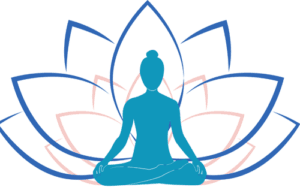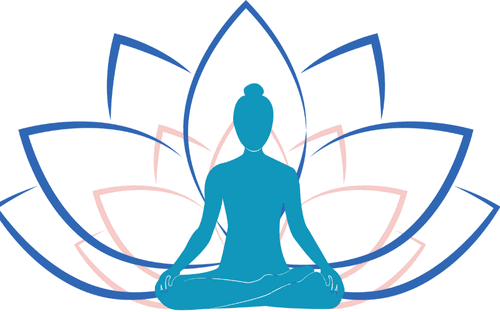Resources
Essential Meditation Resources for a Peaceful Practice
Incorporating essential meditation resources for a peaceful practice can transform your experience, allowing for deeper relaxation and mindfulness.
Meditation Cushions and Accessories
Using essential meditation resources for a peaceful practice, such as zafu cushions, can enhance your meditation sessions.
Choosing the right essential meditation resources for a peaceful practice can lead to more fulfilling and comfortable sessions.
These essential meditation resources for a peaceful practice, when chosen wisely, can help create a nurturing environment.
Meditation is a practice that encourages deep relaxation and mindfulness, and having the right tools can significantly enhance this experience. One of the most important accessories for any serious practitioner is the meditation cushion. Among the options available, zafu cushions are particularly popular. These round cushions are designed to elevate the hips and promote a stable, comfortable sitting position. This elevation can aid in achieving a natural alignment of the spine, thus helping to prevent discomfort during extended periods of meditation.
The use of essential meditation resources for a peaceful practice can significantly elevate your state of mindfulness.
Incorporating these essential meditation resources for a peaceful practice into your routine can make a world of difference.
Integrating essential meditation resources for a peaceful practice enhances the overall ambiance and effectiveness of meditation.
Books that focus on essential meditation resources for a peaceful practice can offer invaluable insights and guidance.
Exploring essential meditation resources for a peaceful practice can significantly enrich one’s understanding of mindfulness.
The right essential meditation resources for a peaceful practice can help individuals deepen their meditation experience.
Engaging with essential meditation resources for a peaceful practice can make the journey more enjoyable and fruitful.
In addition to zafu cushions, meditation benches provide another ergonomic option. These benches are designed to support the body in a kneeling position, relieving pressure on the legs and providing a stable base. This can be especially beneficial for those who may find sitting cross-legged challenging. Coupled with a meditation mat, practitioners can create a dedicated space that enhances focus and comfort. Mats can offer additional cushioning and traction, making it easier to maintain posture during practice.
Beyond cushions and benches, other meditation tools can play a vital role in creating an inviting atmosphere. Bolsters, for example, can add extra support to the body, helping to alleviate tension and allowing for a deeper experience. Blankets can be useful for keeping warm during long sessions, while eye pillows can promote relaxation by blocking out light and providing gentle pressure on the eyes. Each of these accessories contributes to a more grounded meditation practice, allowing the mind to settle into a state of calm more easily. By thoughtfully selecting cushions and accessories, practitioners can create an environment that fosters peace and enhances the benefits of meditation.
Diffusers and Essential Oils
Using essential meditation resources for a peaceful practice through apps makes meditation accessible anytime, anywhere.
Digital tools are among the essential meditation resources for a peaceful practice that can track your progress.
In conclusion, investing in essential meditation resources for a peaceful practice is key to achieving personal growth.
Incorporating diffusers and essential oils into your meditation practice can significantly enhance your overall experience, promoting tranquility, focus, and relaxation. Essential oils have been utilized for centuries, with many practitioners noting their calming effects, making them a beneficial addition to any meditation routine. Among the most revered oils, lavender is known for its soothing aroma, which can help reduce stress and promote a peaceful mind. Similarly, frankincense possesses grounding properties that can aid in deeper meditative states. Sandalwood, on the other hand, is often praised for its warm, sweet scent, fostering a serene environment conducive to meditation.
There are various types of diffusers available, each with unique features that cater to different preferences. Ultrasonic diffusers mix essential oils with water and use ultrasonic waves to create a fine mist, dispersing the scent throughout the room. This method not only delivers the benefits of the essential oils but also adds a touch of humidity to the air, enhancing the overall ambiance. Alternatively, nebulizing diffusers work without water; they utilize a vacuum process to disperse undiluted essential oils in their concentrated form. This type provides a more potent aroma, often preferred by those who want to experience the full strength of their chosen oils.
To effectively use essential oils during meditation, it is important to create an inviting atmosphere. Begin by selecting your preferred essential oil or a blend that resonates with your personal experience. Fill the diffuser according to the manufacturer’s instructions, ensuring the water-to-oil ratio is optimal. Start the diffuser a few minutes before your meditation session to allow the aroma to infuse the space. This preparation not only establishes a tranquil setting but also enables the essential oils’ calming properties to take effect as you settle into your meditation practice. By thoughtfully integrating diffusers and essential oils into your routine, you can create a peaceful environment that supports your journey towards mindfulness.
Books and Courses on Meditation
When exploring the realm of meditation, numerous resources are available that cater to both novices and experienced practitioners. Several highly recommended books have proven invaluable in deepening understanding and enhancing personal practice. For instance, Jon Kabat-Zinn’s “Wherever You Go, There You Are” serves as an excellent introduction to mindfulness meditation, emphasizing the importance of being present and cultivating awareness in everyday life. This book is particularly beneficial for those looking to incorporate mindfulness into daily routines.
Another notable title is “The Miracle of Mindfulness” by Thich Nhat Hanh. This book offers practical exercises and insights that promote loving-kindness and compassion through mindfulness practices. Hanh’s teachings bring a gentle perspective on meditation, making it accessible and relatable for a wide audience. Moreover, for readers interested in deeper philosophical exploration, “The Heart of the Buddha’s Teaching” provides a comprehensive overview of core Buddhist principles, ultimately enriching one’s meditation practice.
In addition to books, many courses, both online and in-person, provide structured guidance for individuals seeking to deepen their meditation practice. Platforms such as Coursera and Udemy offer a range of courses covering diverse styles, including transcendental meditation and guided imagery. These courses often feature expert instructors who share their insights, making meditation practices more approachable.
Local community centers and wellness studios also host workshops dedicated to meditation, offering a space for practitioners to gather and learn together. These gatherings foster a sense of community, which can enhance motivation and accountability as one navigates their meditation journey. Overall, whether through literature or structured courses, the right resources can significantly enrich one’s meditation experience and understanding.
Noise-Cancelling Headphones, Apps, and Digital Tools
In today’s fast-paced world, finding a tranquil space for meditation can be a challenge, particularly in noisy environments. One effective solution is the use of noise-cancelling headphones. These specialized headphones are designed to reduce ambient noise, allowing practitioners to immerse themselves fully in their meditation sessions. By blocking out distractions such as traffic, conversations, or household sounds, individuals can more easily focus on their breathing and mental state, making the practice of meditation more effective and enjoyable.
Alongside noise-cancelling headphones, meditation apps have emerged as invaluable tools for enhancing meditation practice. Many of these applications offer guided meditations, which can be particularly beneficial for beginners or those seeking to deepen their practice. Popular choices include Headspace, Calm, and Insight Timer, which provide a variety of sessions designed to cater to different needs, ranging from stress relief to improved focus. By integrating soundscapes and soothing music, these apps create an auditory backdrop that encourages relaxation and mindfulness.
Moreover, digital tools extend beyond just audio assistance; they often include tracking features that enable users to monitor their progress over time. This capability can foster a sense of achievement and keep practitioners motivated on their meditation journey. Users can set reminders, explore custom settings, and even share their experiences with a community of like-minded individuals. In this way, technology not only supports meditation practice but also adapts to personal preferences and lifestyles, ensuring that everyone can find a method that suits their needs.
Overall, the combination of noise-cancelling headphones, meditation apps, and digital tools creates an empowering environment for practice, allowing individuals to cultivate a more serene and focused state of mind amidst the inherent distractions of daily life.



